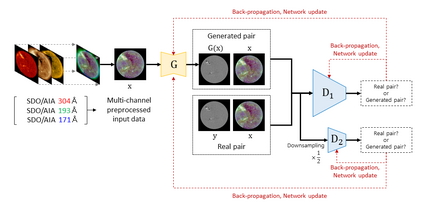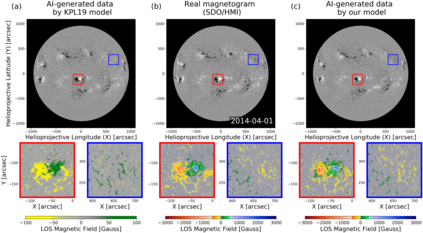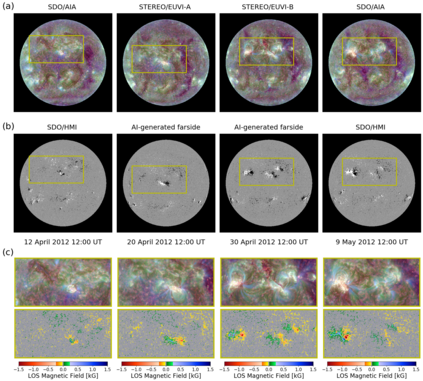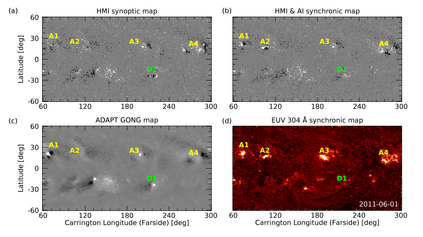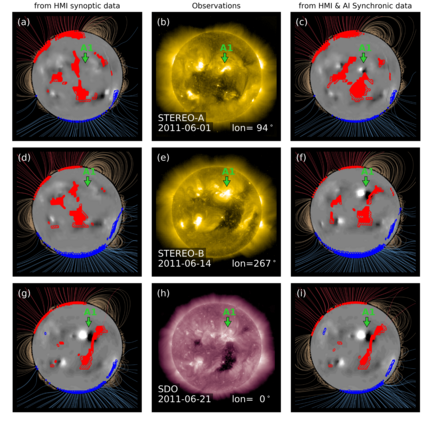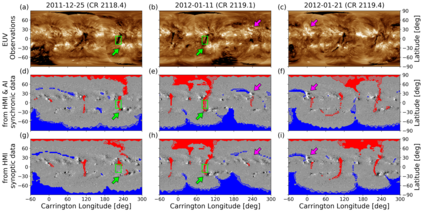Solar magnetic fields play a key role in understanding the nature of the coronal phenomena. Global coronal magnetic fields are usually extrapolated from photospheric fields for which farside data were taken about two weeks ago when it was at the frontside. For the first time we have constructed the extrapolations of global magnetic fields using frontside and AI-generated farside magnetic fields at a near-real time basis. We generate the farside magnetograms from three channel farside observations of Solar Terrestrial Relations Observatory (STEREO) $-$Ahead (A) and $-$Behind (B) by our deep learning model trained with frontside Solar Dynamics Observatory (SDO) EUV images and magnetograms. For frontside testing data sets, we demonstrate that the generated magnetic field distributions are consistent with the real ones; not only active regions (ARs), but also quiet regions of the Sun. We make global magnetic field synchronic maps in which conventional farside data are replaced by farside ones generated by our model. The synchronic maps show much better not only the appearance of ARs but also the disappearance of others on the solar surface than before. We use these synchronized magnetic data to extrapolate the global coronal fields using Potential Field Source Surface (PFSS) model. We show that our results are much more consistent with coronal observations than those of the conventional method in view of solar active regions and coronal holes. We present several positive prospects of our new methodology for the study of solar corona, heliosphere, and space weather.
翻译:在了解日冕现象的性质方面,太阳太阳磁场发挥着关键作用。全球日冕磁场通常是从光球场外推的,其远端数据大约在两周前在前侧拍摄。我们第一次利用近实时时间基础,利用前侧和AI产生的远端磁场,构建了全球磁场外推法。我们从太阳地面关系观测台(STEREO)的3个频道远端观测中生成了远端磁图。全球日冕磁场通常从太阳动力观测站(STEREO)的1美元头(A)和1美元Behind(B)的3个频道远端观测中生成了远端磁场磁场图。同步地图显示的不仅是ARs的外观,而且在太阳动态动态动态观测台(SDODO)的深度观测中也消失了很多。对于前侧的太阳表面空间观测台而言,我们使用的磁场分布分布与实际数据同步,我们用这些常规的模型显示的磁场结果比以前更一致。


